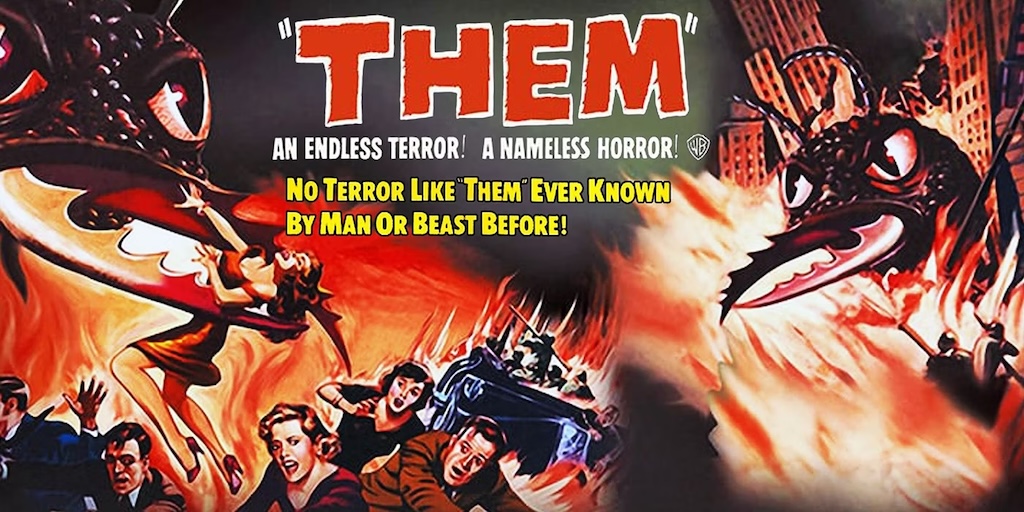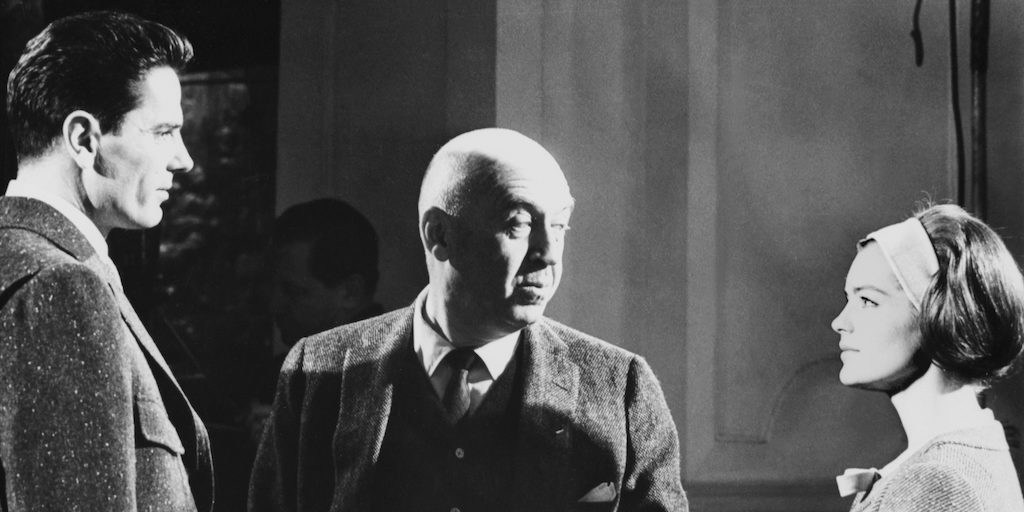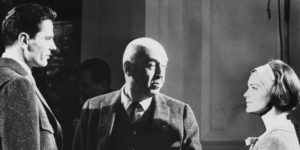For Roberto “Dodi” Scheuer
“Many hands in a plate can make a lot of doodles”
-Anonymous
Not every celebration must refer to an achieved action or fact: to an action effective in the emotional-spiritual sense. We must also get used to celebrate dates, events that indicate what can be called a productive mistake. History is full of such contradictory episodes and facts. They should be taken into account: but not as an ephemeris of a journalistic extension ––or now as graphic expressions on the net––, that stop in what we can denominate the shell of information, and not in the effective fruit that, like always ––and so is pointed out by creation as an example––, is that which is valued and fed upon.
Once the Concept of Cinema was set efficiently into motion by Griffith (1908), only one nation, or better said here, one culture or one emotional-spiritual formation would achieve in making it not only its own, but also concentrating its own particularities in this aesthetical-political concept.
Germany as a nation, in the modern judicial sense, was and still is a nation or recent state. Its formation as a totality, imperial in this case, was not given until 1870-71, and after a fortunate war against another empire, the French under Napoleon III.
Naturally, Germany as a country was sustained first in their language and the translation of that tongue into languages, such is the case of sagas and legends, and later in its aesthetical but also political affirmation with romanticism. An exclusively ––as I have repeated–– German phenomenon. The others, with the possible exception of English, were romanticisms of a second or third degree, when not straightforward plagiarisms; not just in the aesthetical-formal sense, but also emotional, and even today you might say psychological. Like the one Esteban Echavarria tried to import here; one of a third or fourth degree already.
Because there are interior lives or interiorities that are mimetic manifestations of a determined mental atmosphere. This mimetism can even produce some works that, though mimetical in their relation to a bigger totality, keep however and even give a tone or shade of its own to their own aesthetical manifestations.
Of course German romanticism was an organic construction. But a totality made out of fragments. This which seems like a paradox, and in all rigor it is, must be briefly analyzed.
In the same way Italian Renaissance was not just painting or architecture ––given that, for example, Machiavelli was a typical renaissance man––, the German romanticism was not just poetry, both in the lyrical and dramatical sense. It was, and very much, philosophy, biology, the nascent psychology of the subconscious, painting, theatre, and especially two manifestations; one of them in all certainty coined in that emotional-historic moment.
Such forms or manifestations were the fragment and the fantasy story created by Hoffman.
The fragment must not be confused here with only the aphorism or just the maxim. A fragment is a clipping, both in the plastic and musical sense, as it is evident in compositions emerging in this moment. The “Nocturnes”, “Capriccios”; as well as the song cycles, like Schubert’s “Winter’s Journey”, are brief musical manifestations confronting the monumental and, more often than not, tedious symphonies.
But the fragment is also configured in particular narrations, such as the Marchen, stories that retake the fairy tale tradition, with their goblins and similar creatures, but by making them effective in writing, instead of orally like their mythic origins, they move between the brief illumination and the initiation impromptu.
A Fragment is also in the relieving of the classical in its aesthetical transportation to the present. For example, the devotion ––so is expressed–– for the torsos and other fragments of Greek rubble more or less recently discovered; such as the so called “Vatican Torso”.
Illuminist totality is rigorously hated at the other side of the Rin. That which is encyclopedical above all things. Opposed to these French lights is that which is dark, the nocturnal, the vague, the chiaroscuro, the plastic deformity, the taste for the oneiric and even for the macabre.
It is precisely for this early pioneering reaction to the primacy of reason, in the bourgeois illuminist sense, and above all of a secular terrenality, that the German romanticism achieved ––a century or half a century later–– that sensibility, the only one in rigor that could understand and take forward the Concept of Cinema to its own territoriality, set into motion around 1908-09 somewhere in transatlantic Europe by D.W. Griffith. In case it is necessary to repeat it, Argentina is that other part of transatlantic Europe.
In its opposition to this supposed French encyclopedic clarity and calm, it also came out the mode and form of the modern fantasy storytelling, or the fantastic. Fairies, goblins and other non-human creatures or “intermediate creatures” of the German legendary were given the controversial creation of a type of storytelling, part of a totally realistic everyday nature, a here and now in space and time and even of its customs, where an otherness suddenly appears. That otherness appears in this everyday nature in an invasive, aggressive and parasitic form. But that element of otherness is only one. And of course that unique otherness, or personified by a single entity or element, is accordingly given a hostile and directly diabolical character. Doubles, ghosts, vampires, automatons…
With the writing and publishing of “The Sandman”, around 1818-19 by E.T.A. Hoffman, it represents the point of departure for this condition of the fantastic that Edgar Allan Poe will take to its full formal development and, especially, its spiritual development.
Of course that, as we have argumented elsewhere, Hoffmann maintains an imaginary appendix in that prior form of storytelling that is the Marchen, the story or, better said here, the fable, where the otherness is not only one or keeps a human form or is simile to humans, but it is invaded by fairy-oneiric manifestations. Such is the case of “The Pot of Gold” (1). Again, fairies, goblins, nymphs and others. It seems that in all this fascination, even obsession, with the mythologeme of the double and other forms of duplicity (baptized as doppelganger), this motif invaded the German romantic ideology. This resulted in them reaching the fantastic without any problem, purely we might even say; but something made it back down to its former manifestation, the magical storytelling.
As we will see below, something very similar would happen precisely with that extreme moment of German romanticism called “expressionism”, and its relationship with fantasy in film terms. When with The Cabinet of Dr. Caligari came the intuition that the expressionism was romanticism’s extreme and last moment. That for that very reason it should pass to its necessary and imperative filmic representation. But it had to ––as we will later explain–– not just dial back to its prior pictorical-theatrical fixity and not reach the Concept of Cinema, but to dial back to the cinematograph by Lumiére-Meliés as well.
A thing that it would not happen ––that is this setback–– with the fantasy story, not just in Poe, and already in America, but in the early work of an almost teenager hailing from England, later refugee, or rather runaway, to Switzerland and later to Italy; Mary Shelley and her novel “Frankenstein”. So was the case of her fascinating descendants: Sheridan Le Fanu, Bram Stoker, et al.
The last articulation of the romantic moment was later known, and even sometimes stigmatized, as “expressionism”. This appears in its complete form through one of those comets, shooting stars that occasionally, in the emotional-spiritual of a determined historical moment, come up as a possible extreme of something not yet fully realized. It is something we have called “medusean sign”; that is an early petrification of a pioneering gesture or discovery, and the consequent fear of those who suffer it of not continuing with that discovery.
But occasionally also appears a mixed (?) figure; let’s say double, to continue in the atmosphere of this essay.
It is the case of an aesthetical manifestation or work whose author cannot continue, either by his early death, because he fears petrification and abandons it, or for sometimes complex motives; such is the case of Rimbaud’s poetry.
To the first of them, the early death, belongs an author as Georg Buchner (1813-1837). Exceptional author, in every sense, of a meagre body of work due to his short life, though complex and filled with adventure.
Between his manifestations we have that moment of exception that is his brief stage play “Woyzeck” (1837). There the agonist is the common man, to the brim, the biological numeral of the bourgeoisie horizon that is submitted fully, by dark and domineering forces, but of a real-historical nature.
Here the doctor that studies him like a “case”. His military superior, his wife’s lover, and seemingly all the inhabitants of that one horse town where the action takes place.
In Woyzeck we have the common man as a marionette, as a puppet, almost as an automaton, one set to a state of trance and automatism under pressure of the social media in which he attempts to survive and even physically move. Something that will be kept very present for the character of Cesare in Caligari.
This physical deformation that is a reflection of his emotional deformation, or if we want to, psychical, always translated or represented by the corporal, will be taken to its extreme consequences by a posterior dramaturgy, as well as a lyrical and a painting of the same “expressionist” temper. We can mention, without being exhaustive, Frank Wedekind (1864-1914) and his dramatic duet “Earth Spirit” (1895) and “Pandora’s Box” (1904); the agonic lyrics by Georg Trakl and the painting by authors such as Alfred Kubin and Egon Schiele.
In this synthetic mundus where a century of romanticism is extremed, added to the early and only expressionism by Buchner, is where cinema necessarily appears. But not its Concept. (2)
The early moments of German cinema ––pr cinematograph, so we can understand each other–– were also photographic transcripts of its fundamental gradient; that is fantasy. Such is the case with The Student of Prague (1912-13) and the first version of The Golem (1915) (3). But just like it happened with the Italians, they were only translations of preexistent poetic motifs through the lone and simple cinematograph; that is applying the camera to photograph-in-motion plastic-theatrical compositions manufactured beforehand.
It would be with barely posterior auteurs, like Fritz Lang and Murnau, that the cinema known as “expressionist” would achieve to synthetize effectively the German imagination, especially its poetics, with the Concept of Cinema.
Of course that for one of those knots that appear in emotional-spiritual history and its formal aesthetic translation, some unexpected crossings happened that contradict ––luckily, for some of us–– the Histories of the Art presented as “totalizing”.
To give only one example in the History of Plastic Arts, the moment known as “mannerism”, that still keeps some historians awake, especially those with liberal tendencies.
One of those knots, but one of those that remain tight, is the film The Cabinet of Dr. Caligari, of whom this year marks the 100th anniversary of its release. Here the script or original plot by Hans Janowicz and Carl Meyer was doubly distortioned by the formal scuderia of painters and designers that translated without restraint the motifs and figures of his plastic colleagues into the set design of the film. This innovation, like many others in history, meant a regression.
The statism of the previous films ––like The Student of Prague–– was attempted to set into motion by distorted set designs; but continuing to look like mere set designs; besides, in a much more evident form than the attempted in parallel by the theatrical, but “realist”, set designs taken or photographed by the Italians’ film machine. A period known as the cycle of the big divas (4).
The small history or petit histoire that introduces the shooting of Caligari have already been repeated and with variations. It is kept in mind that it was shot late in 1919 in the middle of a Germany divided in two sides, which threatened on different fronts to unleash a civil war, and effectively did in some places, as it was the case of the “Spartacist” Republic, violently repressed that same year.
Germany was a pressure cooker of several clandestine groups, a barely dormant terrorism, conventicles and cults of all sorts, brotherhoods of beggars and fake coin purses. Occultist experiments, black masses and opium dens were spread all around.
A climate of nihilism and terra incognita permeated a spirit such as the German, always oscillating between a rigid reasoning and symmetrical rage, yet also fascinated by the darkest and more twisted emotional zones. That Germanic diabolism, which since the legend of Doctor Faustus and onwards, has been represented under several imaginary die-cuttings.
Janowicz and Mayer’s original screenplay ––it is said–– was an attack to authority in a Prussian sense, which both writers have endured as soldiers during World War I, or “First European Civil War”, as coined by Ernst Junger, who also fought in it, as well as the father of who is writing this very text you are reading, by the way.
This verticalism would shortly later lead to what we all know, which this film ––like many other that came after it and of course far superior to Caligari–– seems to have prophesized.
But it is repeated to us that this original plot, in which Caligari leads a double life, as a respected psychiatrist and devilish hypnotizer, was turned into a paranoid delusion from the protagonist (Francis), who is telling the story to another recluse in the asylum where they are committed. Employing to such means (in the setting of his fiction) not just one patient ––Lucy, which he is in love with––, but the very psychiatric director of the asylum, which is Dr. Caligari. Who we see at the beginning ––according to Francis’ retrospective story–– as a dark traveling magnetizer exhibiting Cesare, his “human doll”, both in fairs and carnivals as well as employing him as an instrument for his nightly assassinations.
Legendarily, this change in the plot was attributed to Fritz Lang, first tasked with the directing of the film, but declined it, because he found himself in the middle of the shooting of his serial, The Spiders; of which he could only finish the first two entries.
This is the small and repeated story. Rivers of ink were written trying to find how the original screenplay was like. Even that change in sense, denounced by both writers, would be, according to some historians, nothing less than an imaginary reconstruction a posteriori by Janowicz and Mayer, who at the same time contradict each other…
The most important subject for us, and fundamental at that, is how this film, of a pioneering and medusean period, early and exemplary illustrated a basic mistake in filmmaking. The servile dependency of a part in detriment of the totality. Which does not mean that mistake would not be repeated, and abundantly at that, to this very day. Even more so, in these days we are bearing witness to that we can call inflationary cybernetic caligarism.
The engineering involved to plastically reproduce the mental twists of the narrator over the course of the story, let’s say the very handy “nightmare climate”, either hot or cold, has been, ever since and forever, a litmus test to which the mise-en-scene in the Concept of Cinema must submit itself to. For that same reason, in Caligari those labyrinths without a center, those languid and loose doors and windows like the liquefying clocks posteriorly made by Dali, those dented zig-zags ––praised by some to be “like knives”, which is more than obvious––, interfere with the development of the story. Which, being a film story, relies second by second in a representation without flaws related to the plot and fable being accordingly displayed.
As we have anticipated here, to the early statism of films such as The Student of Prague, where the plot consciously derived from the early steps taken by the German romanticism, Caligari sought to add all the prior moments of that movement. Both the early Sturm und Drang (“Storm and Impulse”) as well as Hoffmann’s romanticism and later the expressionist theatre by Buchner and Wedeking in early accordance with the paintings by Schele or Kubin. Should sound films have existed back then, the Caligari score would surely have remembered some moments of Arnold Schonberg’s Transfigured Night or the Pierrot Lunaire.
But that precipitate of influences ––however the original screenplay was–– did depend stylistically on all the German romanticism; not just literary or pictorial, of course, but fully philosophical. In such a way the features of Caligari, however dilated, are more than evidently taken from preserved photographs of Schopenhauer.
But the entire film was a big disagreement. The ostentatious set designers, builders and costume designers took a different path than the writers; and, at the same time, the director (Robert Wiene) took his own; that could be narrowed down to simply aesthetically photograph the painted cardboards with a declaredly expressionist tint. By the way, Wiene’s filmography would later be continued into a brief and acknowledged mediocrity.
However, and despite all we said here, Caligari keeps something from its original aura; an aura that grew over the years. Even more, the film emits an ambiguous legend; an ambiguity that increments the legendary, until almost appearing as a mythical representation, a mythologeme. A small period aura turned timeless. It put into circulation what Germans call “sehnsucht”; a diffuse and murky desire or yearning.
It propelled ––and here my biographical-self steps in–– some of our first steps into cinema, and also towards everything related to fantasy. Not for anything, every cinematheque worth its salt had to have at least one copy of the film. Even the Argentinian Cinematheque, which kept a copy of the film in a rather foggy state that contributed even more to that aura of mystery and its status as a bleak nocturnal piece.
For all this is why Caligari has become an anonymous film, which makes it even more related to every authentic legend.
For us it is and will continue to be the first intuition of a discipline and a passion for critical theory. That comes from intuitions emitted ––or are believed to be emitted–– from a specific aesthetical-spiritual work.
Since we saw for the first time the final shot of a Caligari, bordering on ecstasy, while we read in the intertitle “Now I know how to cure him”, we suspect that this ending has a tortuous spin, accordingly to the tortuosity of its factual and fictional story.
Isn’t it possible that Caligari, finally and after being revealed as the protagonist in the story of an insane person, feels forced, compelled to be that Caligari that Francis dreamt or deluded about?
1: Naturally, this author also coins a mixed method where the fairy tale segues into the fantasy realm. Such is the case of “The Nutcracker and the Mouse King”, which later became known for its ballet version, composed by Tchaikovsky.
2: Given that the concept was in its totality in the first Griffith: The Lonely Villa; A Corner in Wheat.
3: This version, directed by Stellan Rye, has no preserved copies.
4: Contemporary Italy also is, in the modern legal sense, a recent nation (1860-61); though here it was not just the language coined by Dante, but it was also for other historic-political elements different to those in Germany, which sealed a spiritual unity maintained since the Roman Empire.
With the arrival of the cinematograph as a novelty machine, the different territorialities explored its employment each in their own field.
In the case of Italy, those first and primary films around 1910, a period called as those of the “big divas”, were nothing more than photographic transcripts of not just plots, but of their mise-en-scene that at the same time tried to translate the operatic staging.
It would be with later auteurs, during the 20’s and 30’s, when the melodramatic tradition could be articulated with the Concept of Cinema. Until arriving to the gates of self-consciousness with the works of Luchino Visconti and Roberto Rossellini.
By the way, the other current of “pioneering” films, such as Giovanni Pastore’s Cabiria (1914), were nothing more than another case of a simple change of set design, rather than a change of cinema; despite early praise by Griffith himself, whom, by the way, and there’s the detail, rigorously deprived himself of following the example of these directors. He did intuited that there was a path for epic stories of a larger running time. But not through those still photographs of a historical background. The same way the “diva” films were of charged and lavish interiors, but not acting accordingly at all with history.













